
-
Find the right food for your petTake this quiz to see which food may be the best for your furry friend.Find the right food for your petTake this quiz to see which food may be the best for your furry friend.Featured products
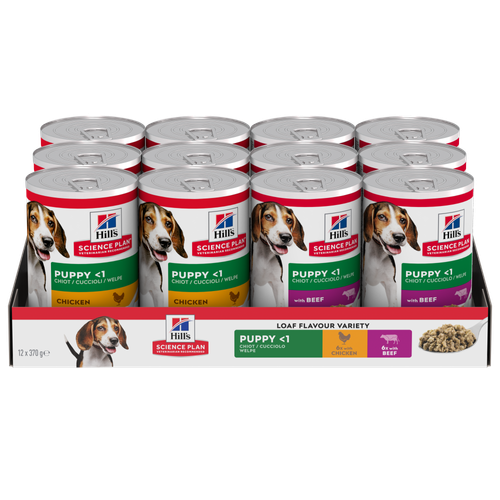 Puppy Food
Puppy FoodHill's Science Plan Puppy Multipack Wet Dog Food with Chicken & Beef are complete premium pet foods for growing puppies from weaning until 1 year old and for pregnant and nursing dogs. Your puppy will love these deliciously smooth and savoury minced loaves, formulated for balanced nutrition and overall health.
Shop Now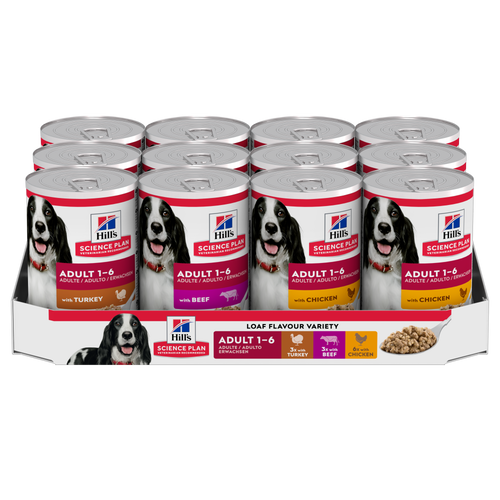 Adult Wet Dog Food with Beef
Adult Wet Dog Food with BeefHill's Science Plan Adult Multipack Wet Dog Food with Chicken, Beef & Turkey are complete premium pet foods for adult dogs from 1 year. Your dog will love these deliciously smooth and savoury minced loaves, formulated for balanced nutrition and overall health.
Shop Now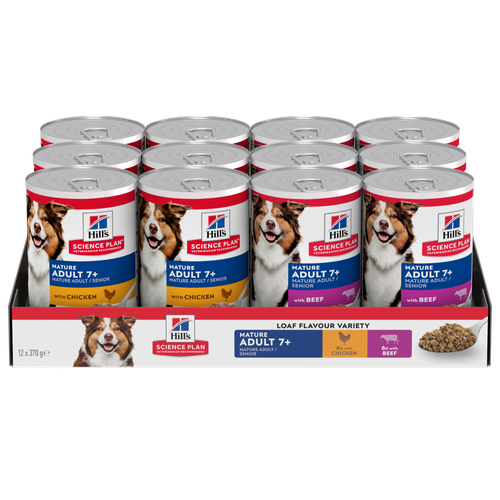 Mature Adult Dog Food
Mature Adult Dog FoodHill's Science Plan Mature Adult Multipack Wet Dog Food with Chicken & Beef are complete premium pet foods for mature adult dogs from 7 years. Your dog will love these deliciously smooth and savoury minced loaves, formulated to deliver the appropriate amount of energy to support the needs of adult dogs.
Shop NowFeatured products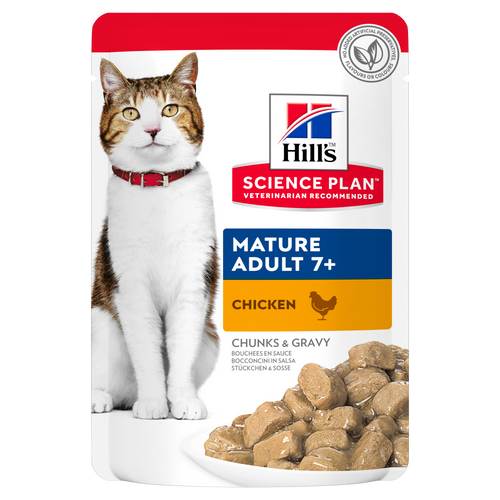 Mature Adult Wet Cat Food with Chicken
Mature Adult Wet Cat Food with Chicken
Tender chicken chunks in gravy for mature adult cats. Made with easy-to-digest ingredients, high-quality protein for lean muscle maintenance and antioxidant vitamins C+E for optimal health.
Shop Now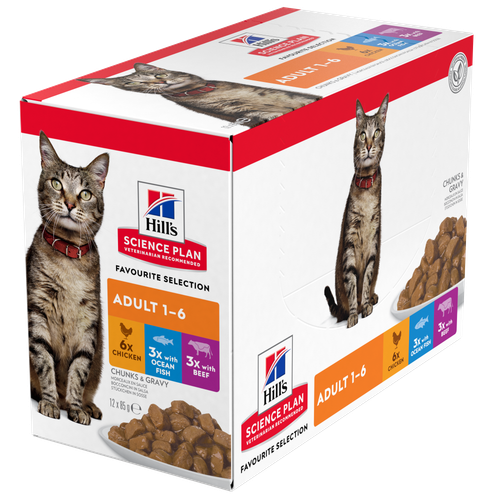 Adult Multipack Wet Cat Food with Beef, Ocean Fish & Chicken
Adult Multipack Wet Cat Food with Beef, Ocean Fish & ChickenTender chunks in gravy for cats, with high-quality protein to maintain lean muscle. With vitamin E and omega-3s & -6s for healthy skin and balanced minerals to support healthy vital organs.
Shop Now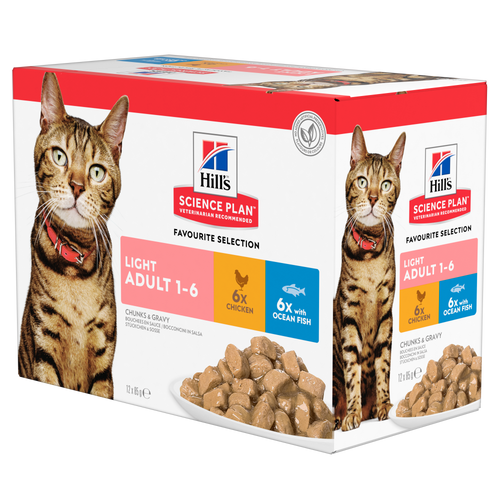 Light Adult Multipack Wet Cat Food with Chicken & Ocean Fish
Light Adult Multipack Wet Cat Food with Chicken & Ocean FishTender chicken chunks in gravy for cats, with L-carnitine and fewer calories for ideal weight management. Packed with high-quality protein, omega-6s, and vitamin E for shiny fur and healthy skin.
Shop Now -
Dog
- Dog Tips & Articles
-
Health Category
- Weight
- Food & Environmental Sensitivities
- Urinary
- Digestive
- Joint
- Kidney
-
Life Stage
- Puppy Nutrition
- Adult Nutrition
- Senior Nutrition
Cat- Cat Tips & Articles
-
Health Category
- Weight
- Skin & Food Sensitivities
- Urinary
- Digestive
- Kidney
-
Life Stage
- Kitten Nutrition
- Adult Nutrition
Featured articles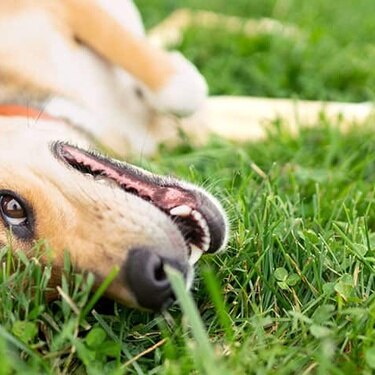 Show some love with wet foods: a great choice for pets with health issues
Show some love with wet foods: a great choice for pets with health issuesShow some love with wet foods: a great choice for pets with health issues.
Read More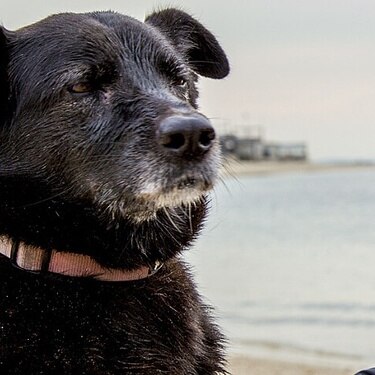 Help! My Dog Doesn't Like Me & I Have a Standoffish Cat
Help! My Dog Doesn't Like Me & I Have a Standoffish CatIf you've ever thought to yourself, "My dog doesn't like me," or "Why do I have such a standoffish cat?" rest assured that you aren't the only pet parent who has these concerns.
Read More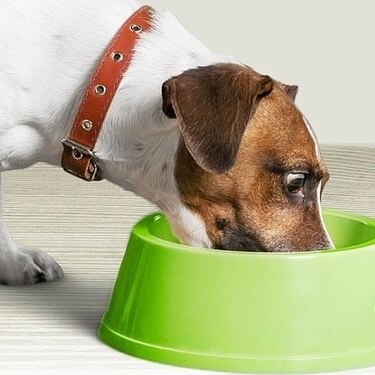 The Right Diet For Your Pet
The Right Diet For Your PetIn people, the right diet is very important. If you are eating the wrong way for your metabolism, activity level, age and lifestyle you could end up with health issues.
Read More -


Is your puppy becoming an adult dog? It may be hard to tell. If you've had them since they were a young puppy, you'll remember the many changes they experienced: their teeth coming in, learning to play fetch, potty training and socialising.
But the older your pooch gets, the smaller and more subtle their developmental growth becomes. It's important for you, as the pet parent, to understand the changes occurring at every stage of puppy development so that you can keep up with their changing needs as they grow into an adult dog.
When Does a Puppy Become a Dog?
Your puppy won't reach maturity all at once. Like humans, dogs transition from baby to adult in stages, though the transition happens much more quickly for dogs. Here's what to look for as your puppy matures:
- Sexual Maturity: Most dogs become sexually mature by 6 months when they're still in the puppy stage of development — both physically and emotionally. At this point, your puppy's sex organs are fully developed, making them capable of reproducing. This is generally the best time to have your dog spayed or neutered in order to avoid unwanted pregnancies and adverse behaviours, such as roaming or marking. Do speak to your vet about the best age to neuter, as it varies with adult size and your dog’s temperament.
- Physical Maturity: Physically speaking, dogs are fully grown by the time they're 1 year old, although large breeds may keep growing until they're 18 months to 2 years old. When your dog reaches physical maturity, they may still engage in puppy-like behaviours, but their physical needs, including the number of calories they need to consume and how much exercise they require to stay healthy, start to become those of an adult dog.
- Emotional Maturity: You'll know your dog has reached emotional maturity when they stop acting like a puppy or an adolescent and fully settle into the role of an adult dog. Typically, emotionally mature adults are less distractible, better at listening and obeying and have a calmer and more settled demeanour. The precise timing of this milestone differs, but most dogs reach emotional maturity by their second birthday.
How to Handle Puppy Adolescence
In puppy development, the time between reaching sexual maturity and emotional maturity is akin to human adolescence. This can be a challenging stage – at times your puppy's behaviour might remind you of that of a rebellious teenager. While not all adolescent puppies exhibit behaviour problems, it is extremely common. It's important to be patient but firm and consistent when establishing boundaries and expectations for behaviour.


Tasty Tips
Meeting Your Growing Dog's Needs: Food, Care, Exercise & More
Though they may still have some emotional maturing left to do, your puppy's physical needs become those of an adult dog once they reach physical maturity. Here's how you should expect to meet your growing dog's changing needs:
- Adult Dog Food: Growing puppies burn through a lot of energy in a day and need specialised food that's high in protein, fat and calories in order to keep up. Once they're fully grown, though, they should switch to an adult dog food that will meet their nutritional needs and prevent them from becoming overweight. Understanding the importance of feeding puppies during their growth stages ensures a healthy transition to adult diets. In order to avoid tummy troubles, it's best to transition slowly over the space of a week, gradually reducing the amount of puppy food while adding in their new adult food. Doing a slow transition by gradually mixing more adult food in each day also helps your dog accept the change in food without turning their nose up.
- Veterinary Care: Puppies, even healthy ones, need much more veterinary attention than adult dogs. Firstly, they need their vaccinations. Depending on where you live and what breed of dog you have, these start between 6 and 8 weeks of age and finish around 12–16 weeks of age. Most dogs have their booster vaccinations at a year of age, but again, depending on where you live (for example, in a high-risk area for Parvo or leptospirosis), your vet may advise that these happen before your puppy turns 1 year of age.
They will also need to be treated for worms and possibly other parasites. Puppies can pick up worms from their mother’s milk, so they should always be treated whether you see signs or not. Your vet will advise you about the best treatment options and frequency.
It’s also important to get into the habit of weight checks at your vet clinic. Plotting your dog’s growth on a chart is a great way to see if they are growing at the right rate, neither too fast nor too slow. It’s also really important for making sure they stay slim. Slim puppies tend to become slim adults, and this helps prolong life. The other benefit of regular monthly weight checks in the first year of life is that your puppy will get used to having positive experiences at the vet, which can really help them to feel settled and calm when they need to go there.
It’s also in the first year that you will discuss neutering, etc. - Barring illness or injury, healthy adult dogs in their prime typically only need to visit a veterinarian once a year for an annual wellness check and vaccinations.

- Exercise: Lots of pet parents wonder how much exercise their puppy or adult dog needs, and it’s a question that is almost impossible to answer because dogs vary so very much. Here are some pointers to help you, but also speak to your vet; between the two of you, you know your lifestyle and your dog better than anyone.
- Puppies and adolescent dogs burn more calories and are generally more active than adult and older dogs.
- Be careful when your puppy is very young – you don’t want to overdo it. Avoid exercise that is repetitive and strains joints such as ball throwing or excessive non-stop exercise like running with you or trying to keep up with a bike. Short, frequent walks of 10-15 minutes at a time are fine to start. It’s important to let them sniff and explore at their own pace. Taking them to a safe open but enclosed space is ideal. They can potter under your supervision and you can practise your recall.
- As your puppy grows, you can increase the length of the walks but keep the exercise natural. Exploring woods and parks and making the most of smells is much better than standing in a field throwing a ball.
- All dogs should have at least two walks a day. It’s important for mental stimulation, preventing frustration and boredom and getting exercise, whatever the weather! The length of the walk will depend on the age, sex, breed, size, life stage and health status of your dog. Collies and other sporting dogs will need much more exercise than many other dogs. Make sure you can meet these needs when choosing your dog.
- Dog Supplies: Depending on how big your dog becomes relative to their puppy size, you may need to invest in new supplies. In addition to a larger collar and lead, your growing puppy may also need to upgrade to larger food and water dishes, a roomier bed, a larger crate or carrier and new toys that are both bigger and sturdier to withstand rougher play. Obviously, the bigger your dog, the more these things will change as they become adults.
It can be bittersweet to watch your puppy becoming an adult – but as much fun as the first year can be, there are few things more rewarding for a pet parent than getting to know the personality of the dog your pup was destined to become. Meeting their changing needs will help set the stage for a loving relationship that will reward you both for years to come.


Jean Marie Bauhaus is a pet parent, pet blogger, and novelist from Tulsa, Oklahoma, where she usually writes under the supervision of a lapful of fur babies.
Related products

Hill's Science Plan Puppy Multipack Wet Dog Food with Chicken & Beef are complete premium pet foods for growing puppies from weaning until 1 year old and for pregnant and nursing dogs. Your puppy will love these deliciously smooth and savoury minced loaves, formulated for balanced nutrition and overall health.

Hill's Science Plan Adult Multipack Wet Dog Food with Chicken, Beef & Turkey are complete premium pet foods for adult dogs from 1 year. Your dog will love these deliciously smooth and savoury minced loaves, formulated for balanced nutrition and overall health.

Hill's Science Plan Mature Adult Multipack Wet Dog Food with Chicken & Beef are complete premium pet foods for mature adult dogs from 7 years. Your dog will love these deliciously smooth and savoury minced loaves, formulated to deliver the appropriate amount of energy to support the needs of adult dogs.
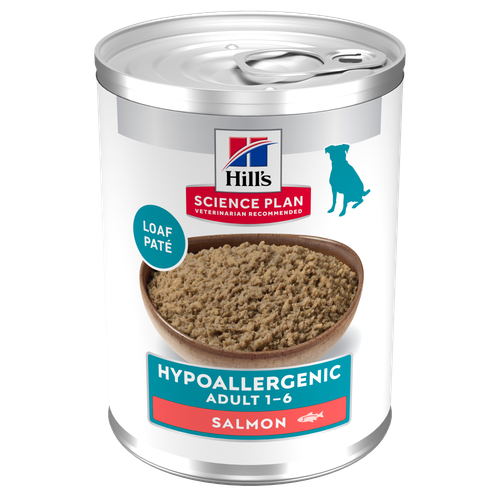
Hill's Science Plan Hypoallergenic Adult Wet Dog Food with Salmon is a complete premium pet food for all adult dogs from 1 year. This savoury tinned loaf is specially formulated for dogs with delicate skin and stomachs. It features a single novel animal protein source and is grain-free.
Related articles
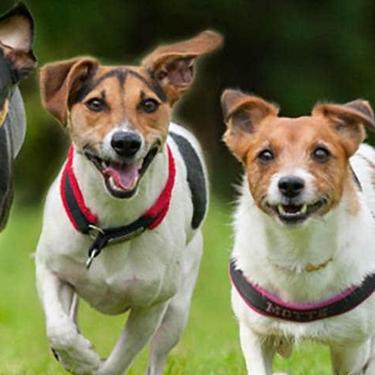
Learn effective tips for feeding a dog that's a picky eater and ensure proper nutrition for a finicky eater. Discover tips for pet parents at Hill's Pet UK.

Many human foods are dangerous to dogs. Read about 5 of the worst toxic food offenders that can kill your dog - and how much it takes to hurt them.
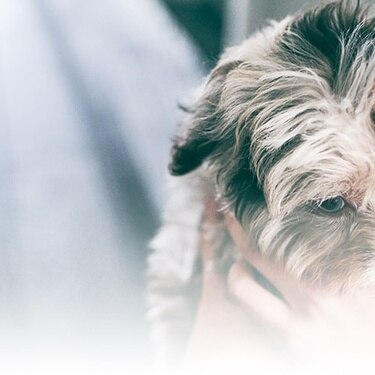
How, when and what to feed your new puppy is an important decision, learn more about the things to consider for feeding your puppy.

Learn about the potential health risks of a raw diet for dogs and why they aren't the best option for your pup or you.

Put your dog on a diet without them knowing
Our low calorie formula helps you control your dog's weight. It's packed with high-quality protein for building lean muscles, and made with purposeful ingredients for a flavourful, nutritious meal. Clinically proven antioxidants, Vitamin C+E, help promote a healthy immune system.
Put your dog on a diet without them knowing
Our low calorie formula helps you control your dog's weight. It's packed with high-quality protein for building lean muscles, and made with purposeful ingredients for a flavourful, nutritious meal. Clinically proven antioxidants, Vitamin C+E, help promote a healthy immune system.

